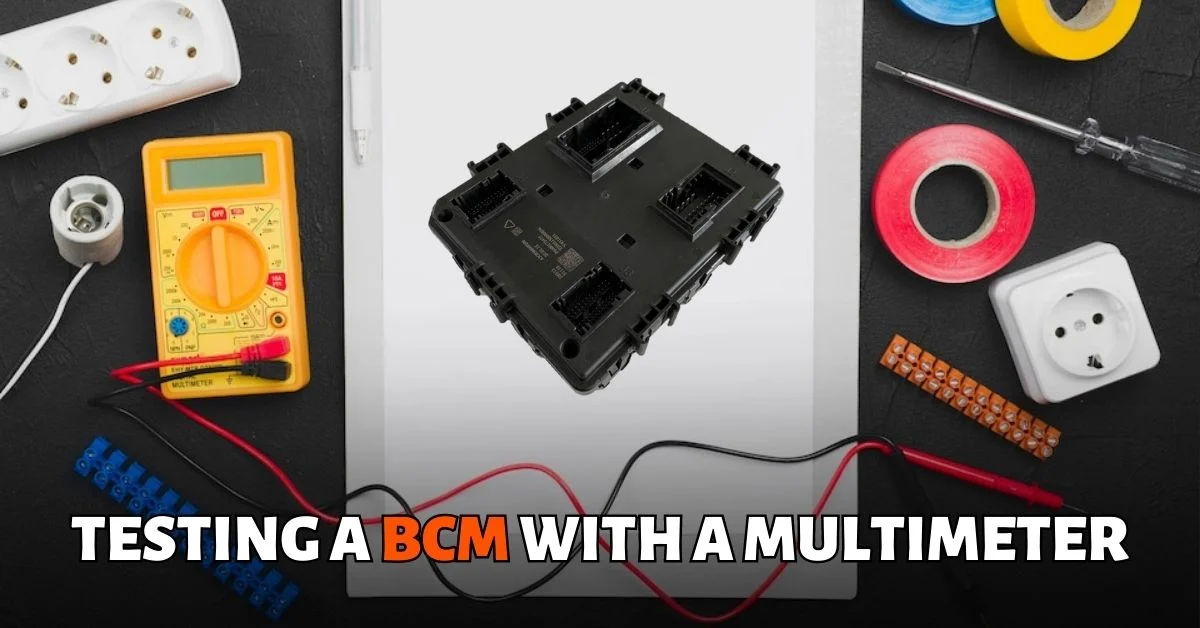Are you experiencing issues with your vehicle’s electronics? Is your dashboard lit up like a Christmas tree with warning lights? If so, your Body Control Module (BCM) or body computer may be the culprit.
The BCM is a critical component of your vehicle’s electrical system, controlling everything from your power windows to your headlights.
As an expert in automotive repair, I can tell you that testing your BCM with a multimeter is the first step in diagnosing any electrical issues in your vehicle.
So let’s roll up our sleeves and get to work!
Symptoms Of A Bad BCM
A bad BCM (Body Control Module) can cause various electrical problems in your vehicle. Here are some common symptoms of a bad BCM:
Malfunctioning Electrical Components
A bad BCM can cause malfunctioning of various electrical components such as power windows, door locks, interior lights, instrument clusters, and HVAC (Heating, Ventilation, and Air Conditioning) system.
Inconsistent or Non-functional Warning Lights
A faulty BCM can cause inconsistent or non-functional warning lights on the dashboard, such as the check engine light, ABS (Anti-lock Braking System) light, and airbag light.
Problems with the Security System
A bad BCM can cause problems with the vehicle’s security system. The keyless entry system may not work properly, and the alarm may go off unexpectedly.
Engine Starting Problems
The BCM is responsible for controlling various aspects of the engine starting process. A bad BCM can cause the engine to crank but not start, or the engine may start and then stall.
Dead Battery
A faulty BCM can cause a parasitic drain on the battery, which can lead to a dead battery if the vehicle is left unused for an extended period.
If you are experiencing any of these symptoms, it’s best to have your vehicle diagnosed by a qualified mechanic to determine if the BCM is the root cause of the problem.
⚠️Safety Precautions
Before you begin testing your BCM, taking some basic safety precautions is important.
First and foremost, always disconnect the battery before working on any electrical components in your vehicle. To prevent injury, you should also wear protective gear, such as gloves and safety glasses.
Finally, follow any manufacturer guidelines or recommendations specific to your vehicle’s make and model. By taking these precautions, you can ensure your safety while testing your BCM with a multimeter.
Required Tools
To test the BCM (Body Control Module) with a multimeter, you will need the following tools:
- Multimeter
- Vehicle service manual (for BCM location and the wiring diagrams for your specific vehicle)
- Safety gloves and glasses
- Automotive test leads
How to Test a BCM with a Multimeter
SIDENOTE: Note that the exact steps and procedures may vary depending on your vehicle and the specific test you are performing.
- Disconnect the negative battery cable to prevent accidental short circuits.
- Locate the BCM in your vehicle. Refer to the vehicle’s service manual or a wiring diagram for the exact location of the BCM in your specific vehicle.
- Set your multimeter to measure voltage or resistance, depending on the test you want to perform.
- Turn the ignition switch to the “ON” position, but do not start the engine.
- Locate the BCM’s electrical connector and unplug it from the module.
- Identify the pins or wires corresponding to the circuit you want to test. Consult the wiring diagram to find the correct pins or wires.
- Touch the multimeter’s positive (red) lead to the first pin or wire, and the negative (black) lead to a known good ground, such as the vehicle’s chassis or engine block.
- Read the multimeter display. If you are testing for voltage, the display should show the expected voltage for that circuit. If you are testing for resistance, the display should show a reading within the specified range for that circuit.
- Repeat the previous step for each pin or wire in the circuit.
- If any readings are outside the expected range, the BCM may be faulty and should be replaced.
How To Troubleshoot Bad BCM?
Check the Connections
As mentioned, check all of the connections between the BCM and the fuse box. Make sure that they are tight and secure. Use a multimeter to test the connections for voltage or continuity. If any of the connections are loose or damaged, repair or replace them as necessary.
Reset the BCM
Disconnect the negative battery cable and wait for at least 15-20 minutes before reconnecting it. This will reset the BCM and clear any error codes. Once you reconnect the battery, start the vehicle and check if the problem persists.
Check the Fuses
Check the fuses related to the BCM and its components. Replace any blown fuses with the correct amperage rating.
Perform a BCM Scan
Use a scan tool or code reader to perform a diagnostic scan of the BCM. This will reveal any error codes or faults that may be causing the problem. If there are any error codes, follow the troubleshooting steps provided by the manufacturer.
Check the Wiring Harness
Inspect the wiring harness that connects to the BCM for any signs of damage, such as cuts or breaks. Repair or replace any damaged wires.
Replace the BCM
If none of the above steps work, then you may need to replace the BCM. Refer to the vehicle’s service manual for the exact procedure to remove and install the BCM. It’s important to get the correct replacement module for your vehicle. You can either purchase a new or used BCM or send your existing BCM to a company that specializes in repairing them.
Note: Troubleshooting a BCM can be complex, and following the correct procedures and safety precautions is important. If you’re not familiar with automotive electrical systems, it’s best to seek the assistance of a qualified mechanic.
Conclusion
Testing a BCM with a multimeter can be an easy and cost-effective way to troubleshoot your vehicle’s electrical system issues. By following the steps outlined in this guide, you can identify whether the BCM is functioning properly or if it needs to be replaced. Remember to exercise caution when handling electrical components and always refer to your vehicle’s manual for specific instructions.
If your BCM is faulty, it is important to replace it as soon as possible. A malfunctioning BCM can cause a range of problems, including issues with starting the engine, warning lights on the dashboard, and even complete failure of certain systems such as power windows or air conditioning. A BCM can often be replaced at home with basic tools or by taking your vehicle to a trusted mechanic.
Testing and replacing a faulty BCM can save you time and money in the long run by preventing further damage to your vehicle’s electrical system. With proper maintenance and troubleshooting techniques, you can keep your car running smoothly for years.



